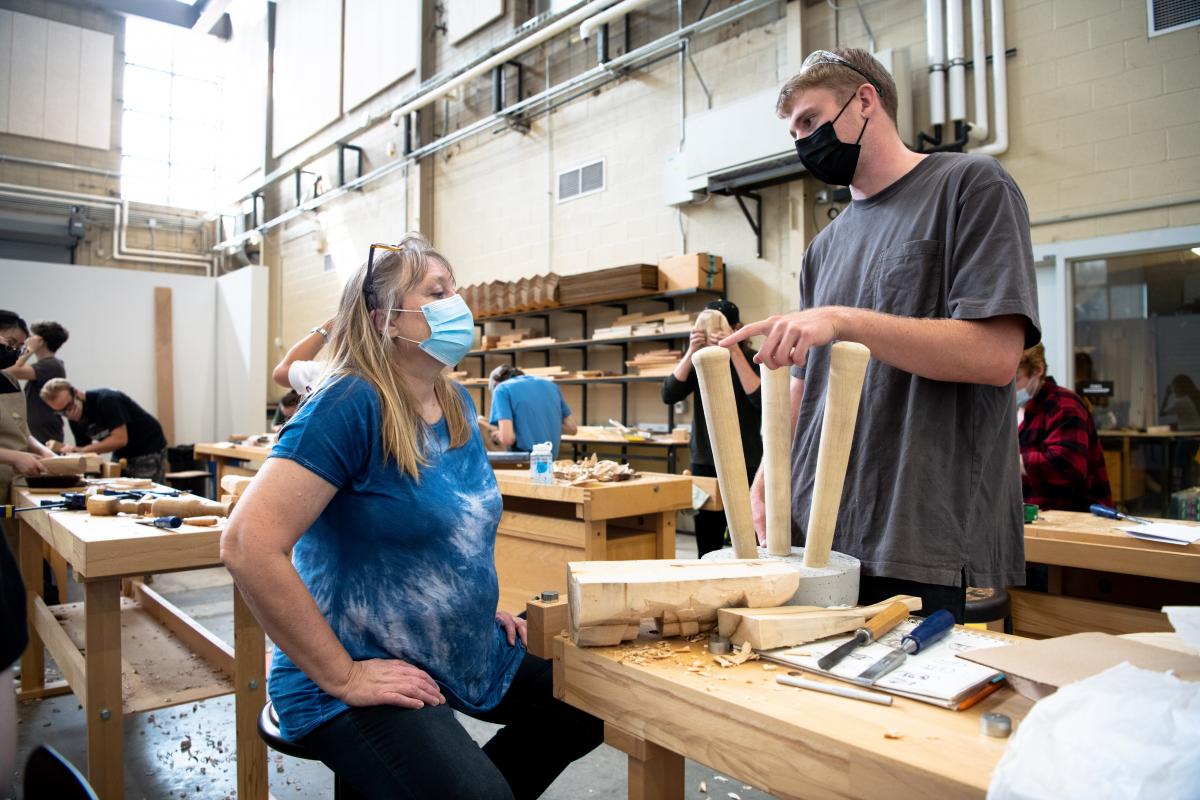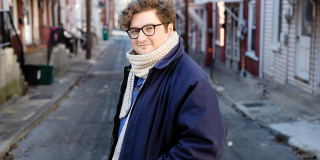
Amy Forsyth is always busy, constantly working on a new project. Chances are pretty good she will have a sketchbook with her and Forsyth’s latest project transitions ideas drawn on paper to designing and building furniture.
Forsyth, associate professor of design in the department of art, architecture and design, is searching for ways to connect her sketches with her furniture.
“I keep a sketchbook with me wherever I go, and make drawings and notes of the things I see that I want to remember or observe more closely at that moment,” she says. “Sketching is an important exercise in careful observation. Many of these sketches go on to inspire larger projects, either overtly or subliminally. I wanted to find a way to take these sketches and use them to make my furniture more distinctive.”
One of her latest creations is an eyeglasses cabinet. A blind contour drawing of herself looking for her glasses is on the door. The cabinet opens with a carved ear handle, and inside are 24 drawings of pairs of eyes gazing through eyeglasses stored in the case.
The inspiration came from a recent illustration course Forsyth took through the School of Visual Arts. She began thinking about how her illustrations could transfer to her work as a sculptural furnituremaker. Her work is often on display at various venues, including one piece currently on exhibit at the Center for Art in Wood in Philadelphia, a mallet that explores the idea of croquet. The exhibition interprets the game, its history and impact on pop culture, and formal aspects of the croqueterie. Forsyth’s concept is her exploration of the notion of cheating.
“I had these really good friends, and they were really nice to each other, but the moment they broke out a croquet mallet they turned into deadly competitors,” she explains. “The piece is about ways you win — two sets of rules that contradict one another, a horn to honk and scare your opponent, and glasses to distract the other person.”
Since she produces so many sketches, Forsyth makes her own custom books. Her commitment to using to sketchbooks has found its way into her classroom studios, as students go into the community and learn how to sketch quickly.
“The students have to sit and absorb what’s around them. What they observe is going on the page. Sketching is something I’ve done for as long as I can remember. I don’t see it changing.”






